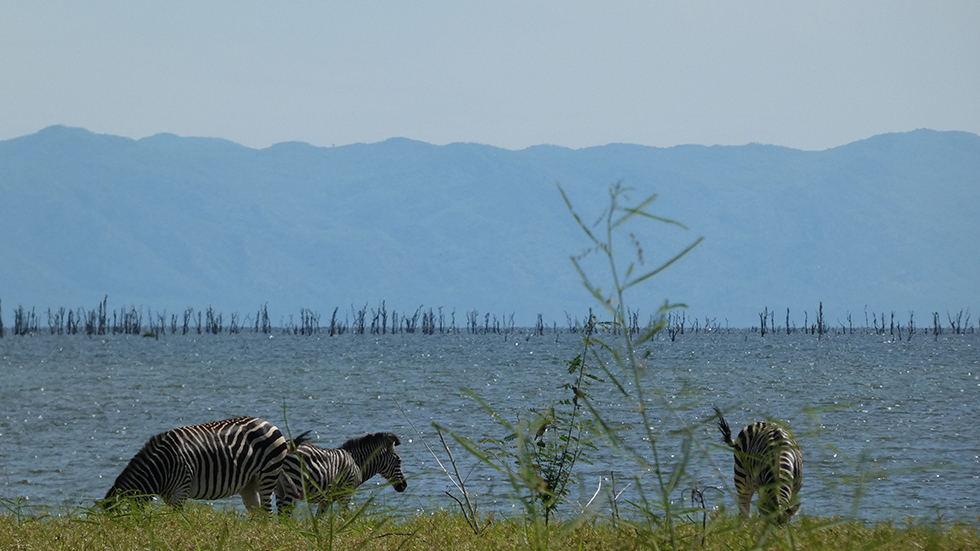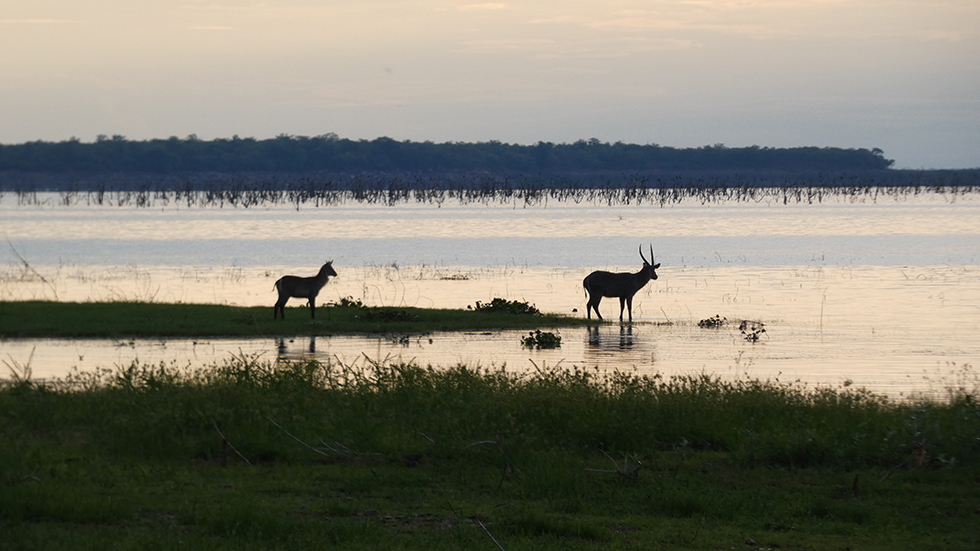

Article 6/6:
The iconic stripes of the Zebras of Africa are so familiar to us, but what do we really know about them? How do they spend their days? What are the similarities and differences between them and our domestic equines? Questions like this have long intrigued me so my passion for all things equine is about to go off on a stripy tangent.

On the shores of the vast Lake Kariba in Zimbabwe live a population of Plains Zebra (Equus Quagga) who I have been lucky enough to spend time observing over the past three years. In Kariba, Elephants on the road, Baboons in the garden and Scorpions in the sink are a part of everyday life but most exciting for me are my wild Zebra neighbours. These beautiful creatures live out their eventful lives on the floodplains surrounding the freshwater lake.

Their original habitat was altered when men flooded the Zambezi Valley to build a hydro electric dam in the 1950’s. Groups of conservationists undertook “Operation Noah” to rescue and relocate as many of the wild animals as they could as the water levels rose. The lake is 240km long and 20km wide. While crossing by boat one day I saw two Elephants swimming. Compelled by instinct shaped by generations before them to follow migratory routes these massive land mammals are surprisingly accomplished swimmers. Their huge bodies seem whale-like in the water and their trunks, like snorkels lead the way gulping air as they go. Floating alongside them is an experience that will stay with me forever.

The Zebra don’t need to migrate now as the fertile shores of the lake and the access to water year round make for a sustainable habitat for them. Drinking is not without its dangers though as Kariba has a huge population of Crocodiles. It’s estimated that there are over 15, 3metre crocs for every 1km of shoreline. It’s quite terrifying to realise that there are so many of them lying in wait just out of sight. I visit the wonderful Rhino bush camp as often as I can and one of the things on offer is a walk along a river bed where you can find fossils from the Late Triassic period, 220 million years ago embedded in the rocks. These are the extraordinary remains of Phytosaurus, who were not dinosaurs, but semi-aquatic reptiles who bore a remarkable resemblance to modern crocodiles in appearance and lifestyle apart from being much bigger!

You can see the awareness of accomplished predators lying in wait played out by the Zebra when they approach the water to drink. Not many Zebra foals reach maturity and it’s speculated that predation by Crocs is one of the main reasons. Whenever I observed drinking behaviour I saw a long drawn out process of vigilance and gradual approach before very quickly drinking and then leaving. The majority of the times I observed them I saw the Zebra blend with the herds of Waterbuck as they went down to drink. Allowing the handsome grey antelope to test the waters first, then if all seemed safe the Zebra drank their fill.
Intriguingly over the past twenty five years or so this population of Zebra have learned to live peacefully alongside the local human population. In our rapidly changing world which is often so detrimental to wild places and animals, finding examples of how to lead shared lives in peaceful coexistence with others is a precious thing. I expected to be studying and learning about their lives, behaviour and hooves, but now seeing how these wild creatures have integrated themselves into the local human community, this has widened out into an example of hope and inspiration for the future.

I first lived here in 1993/94 when there were many wild animals roaming around, and the Zebra when you occasionally saw them were skittish and kept a large distance between themselves and people. As the human population has grown and the settlements have expanded many of the wild animals have moved further away. One exception is the Zebra who are thriving here.

This physical closeness to humans must bring advantages for the Zebra. I haven’t unpicked the full story yet but I think one of the reasons could be the sanctuary afforded to them by close the proximity of humans. As we are more likely to keep Lions and other predators at bay and thus afford the Zebra a degree of safety. Another thread is the spiritual significance that Zebra hold for many of the local people. The local Shona tribe call them M’bizi. and they are a respected totem animal. I have heard of this phenomena from around the world before. Animals who are feared or revered often survive as they are avoided or respected and so left in peace. Other less symbolic species often diminish or are completely wiped out.
This confidence with the close physical proximity of humans works to my advantage too. As these Zebra are so used to people I can get really close for detailed observation without affecting their behaviour too much. For example, seeing the intricacies of their grazing behaviour, which plants they selectively choose and which they avoid. Being close enough to hear their teeth grinding the fibrous plants and to smell the fragrance as they are crushed adds such nuance. It offers what the brilliant Anthropologist Tim Ingold describes as “ Participant Observation”. The recognition that we are not separate from what we seek to learn about and it’s the shared experience of the world through all of our senses, that expands and deepens our understanding. It invites the integrated wisdom of whole body and mind knowing rather than just dry intellectual knowledge.

To be drawn into the day to day happenings of the wild lives of these Zebra has to be one of the most enriching experience's of my life which I hope to share through these articles. Next time I’ll introduce some of the individuals and families and share the stories of their lives that I’ve been lucky enough to witness.

This is part of a blog series:

















Comments